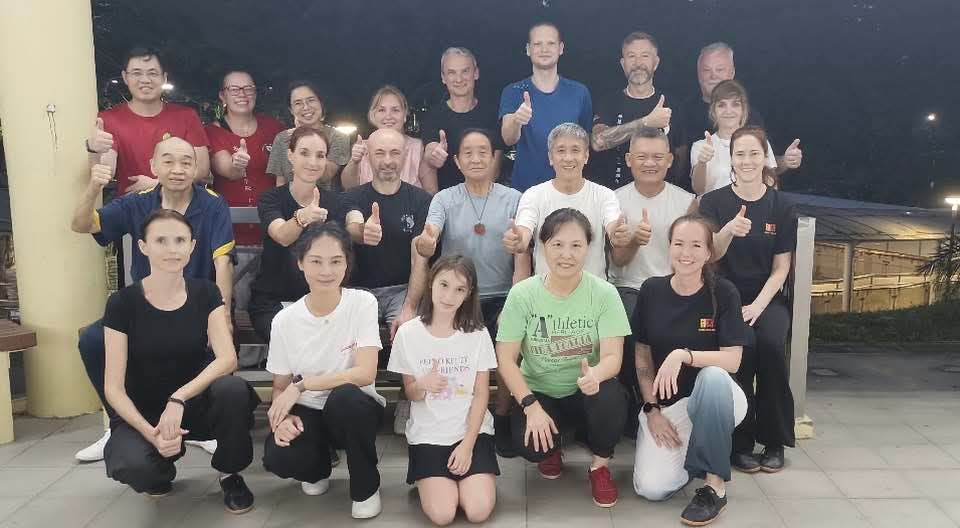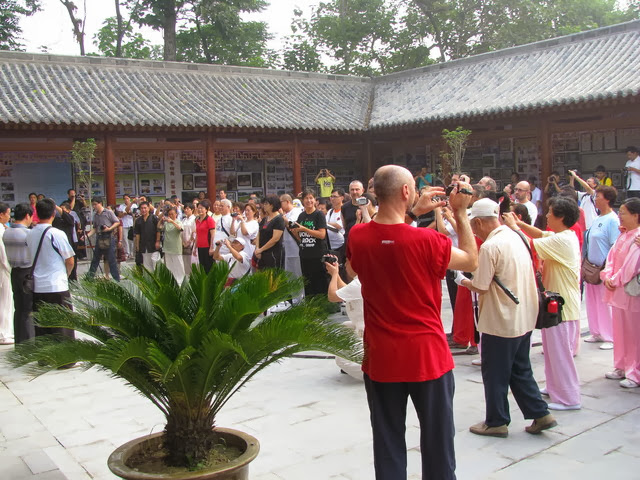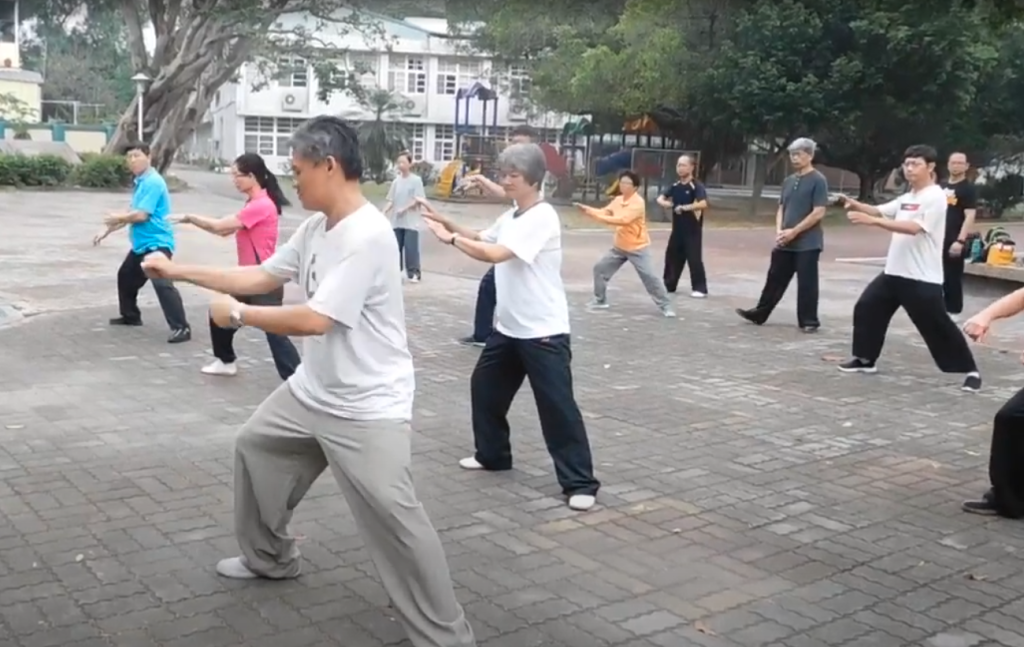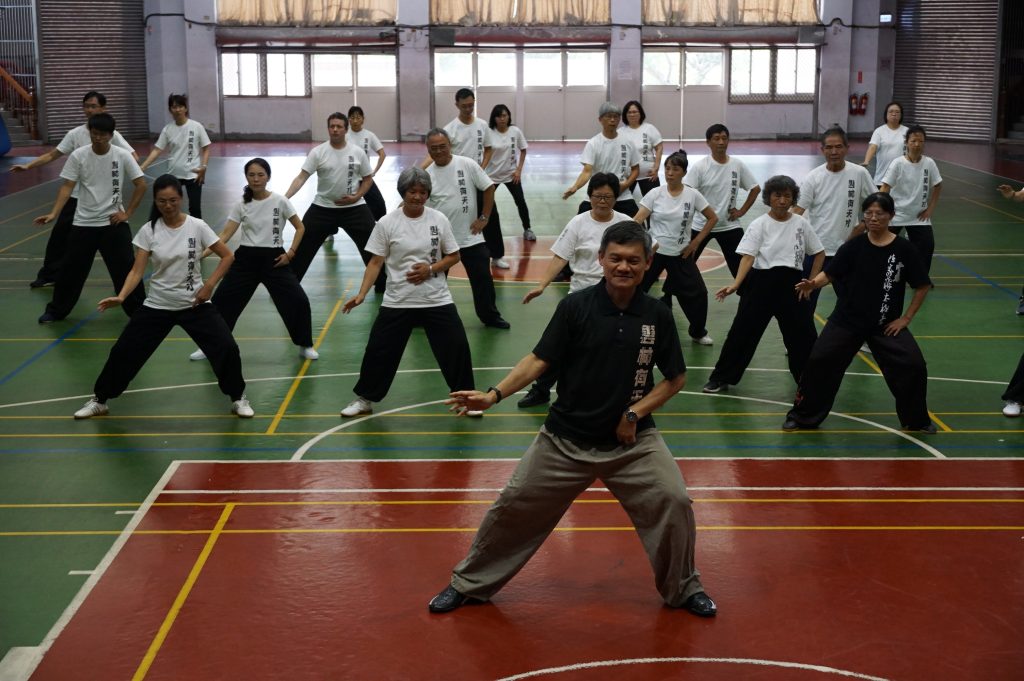There’s an old saying that goes, “To teach is to learn twice.” Nowhere is this truer than in the practice of Tai Chi , where teaching and learning often go hand-in-hand. Whether you’re a seasoned practitioner or just beginning your journey, sharing Tai Chi with others can actually deepen your own understanding — and improve your practice more than you might expect.
Let’s explore how teaching Tai Chi can enhance your own growth , and why combining instruction with personal practice is such a powerful path.
🧘♂️ 1. Teaching Clarifies Your Understanding
Explaining Tai Chi principles — like rooting , alignment , relaxation , or internal energy flow — forces you to articulate what you may have only intuitively understood before. When you break down movements and concepts for someone else, it sharpens your own comprehension.
For example, explaining “peng jin” (ward-off energy) clearly requires not just knowing what it is, but how it feels, how it functions, and how to apply it — all of which deepens your internal grasp of the concept.
🤝 2. Feedback Helps You Grow
As you teach, students will ask questions, make mistakes, or interpret moves differently. These moments offer valuable insight into areas of your own practice that might need refinement.
A student mirroring your posture might reveal a subtle imbalance or tension you hadn’t noticed — giving you the chance to correct it in yourself.
🕊️ 3. You’re Practicing Even While Teaching
If you’re demonstrating forms, adjusting postures, or moving alongside your students, you’re still practicing. Leading a group through the Yang Short Form isn’t just about guiding others — it’s a form of moving meditation that reinforces your own muscle memory and flow.
Every time you guide others through the 24-form, you’re reinforcing your own practice — with purpose and presence.
🌱 4. Internal Awareness Deepens Through Teaching
Teaching requires a heightened awareness of body mechanics, timing, and intention. This focus helps you detect inefficiencies in your own movement and refine them on the spot.
Correcting someone else’s posture often leads to self-correction — a gift of mindfulness in real-time.
📚 5. Continuous Learning Becomes a Habit
When you commit to teaching, you naturally seek out deeper knowledge — studying classical texts, observing masters, attending workshops, or revisiting your own teacher’s lessons. This continuous learning keeps your practice fresh and evolving.
🧩 6. Philosophy Comes Alive Through Sharing
Tai Chi is more than physical movement; it’s rooted in Taoist philosophy — ideas like Wu Wei (effortless action), Yin-Yang balance , and softness overcoming hardness . Explaining these ideas to others helps integrate them into your life and martial mindset.
Trying to explain “listening with your hands” in push hands pushes you to truly understand it yourself.
🧱 7. Teaching Builds Discipline and Accountability
When you commit to teaching others, you’re no longer just practicing for yourself — you’re showing up for your students too. This sense of responsibility naturally increases your own consistency and dedication.
Knowing that others are relying on you makes it harder to skip practice or cancel sessions. You become the anchor for a shared practice — and that strengthens your own discipline.
This kind of mutual commitment not only keeps you grounded in routine but also inspires those around you to stay consistent as well.
🌍 8. Teaching Opens Doors to Deep Connections Across Cultures
One of the most beautiful side effects of teaching Tai Chi is the people you meet along the way. Because Tai Chi transcends language and borders, it becomes a bridge — not just for sharing movement, but for building friendships, exchanging cultures, and even forming lifelong bonds.
As someone who has personally experienced this, I can say without hesitation that teaching Tai Chi has connected me to incredible people across the globe .








I was born and raised in Singapore , where my journey with Tai Chi began. But it was after moving to Perth, Australia , as a new immigrant that Tai Chi truly helped me find community and make meaningful connections. Through teaching and practicing, I met many warm-hearted friends — some of whom have become like family.
During my three years in Taiwan , I deepened both my practice and my relationships. There, I met fellow practitioners who shared their knowledge generously, and in return, I shared mine. We trained together, ate together, and supported each other through life’s ups and downs.
And beyond Asia? I’ve met wonderful Tai Chi brothers and sisters from China, the USA, Italy, the Czech Republic, Germany , and more. These are people I may never have crossed paths with had it not been for Tai Chi — and now they’re part of my global family.
Teaching Tai Chi didn’t just improve my form or deepen my understanding of the art — it gave me a sense of belonging wherever I went.
✅ Tips for Learning While Teaching Tai Chi
| Tip | Description |
|---|---|
| Start Small | Begin with peers or small groups so you can stay focused and engaged. |
| Record Yourself | Film your teaching sessions to review both your instruction and your form. |
| Stay Humble & Open | Don’t be afraid to say “I don’t know” — then explore the answer together. |
| Keep Learning | Continue your own lessons with a qualified instructor to stay grounded. |
| Use Analogies | Develop creative ways to explain movements — this sharpens conceptual understanding. |
🌟 Final Thought:
You don’t have to be a master to teach Tai Chi — you just need to be willing to grow while helping others grow. In fact, some of the deepest insights come when you share your practice with others .
So yes — practice while you share . It’s one of the most powerful ways to evolve as a Tai Chi practitioner.
Want help designing a simple lesson plan or breaking down a specific Tai Chi move or principle?
Leave a comment below or reach out — I’d love to help you create something meaningful to share with your students or community.
Follow our blog for more Tai Chi tips, philosophical insights, and practical guides to deepen your practice.
Remember: The journey of Tai Chi is best walked together.